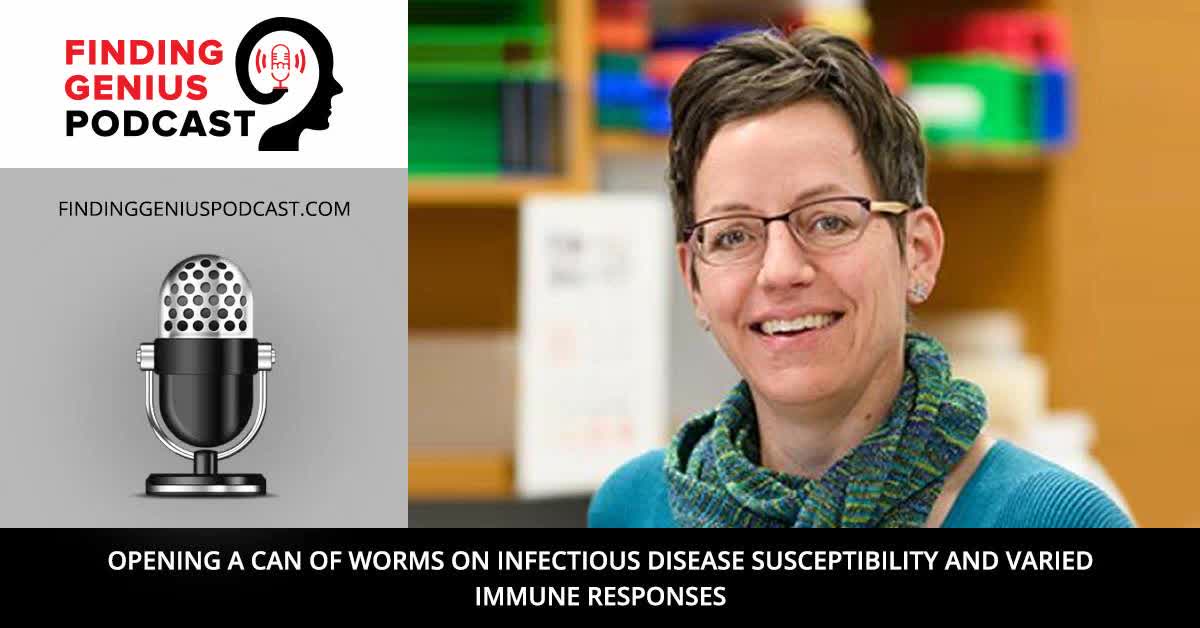Premium Only Content

Opening a Can of Worms on Infectious Disease Susceptibility and Varied Immune Responses
How many parasitic worms do you have in your gut, and how long have they been there? The answer comes with some surprising implications.
Tune in to discover:
What the “weep and sweep” immune response entails and how it works
What surprising tradeoff exists between reproductive abilities and the strength of immune responses to infectious diseases
What interactions occur between host microbiota and parasitic infections in the gut
Andrea Graham is a professor at Princeton University in the Department of Ecology and Evolutionary Biology whose work revolves around a simple question, with a not-so-simple answer: Why do hosts vary so much in their susceptibility to infectious disease and autoimmune disease?
Most of her research is on the parasitic worms that live inside the guts of over a billion animals worldwide, including humans. What dictates whether a host will immediately or very slowly detect the presence of these worms? And once they do detect them, what dictates whether the host is able to mount a strong or weak immune response?
Graham aims to answer these questions primarily by looking to the ecological and evolutionary roots of heterogeneity in immune response and susceptibility to infectious disease.
She shares with listeners some of her research findings, such as those from “re-wilding” experiments using inbred lab mice, deworming treatments used to discover how parasites interact with one another in the same host, and more.
Press play for all the details and learn more at http://algraham.princeton.edu/.
-
 34:21
34:21
FGP
2 days agoMaster Antioxidant, Major Impact: How Glutathione Could Change Your Health Forever
441 -
 6:06
6:06
WPTV
4 years agoInfectious disease doctor talks Johnson & Johnson vaccine
4765 -
 3:47
3:47
WPTV
4 years agoInfectious disease doctor talks school masks
176 -
 13:09
13:09
Larry O'Connor
4 years ago $0.08 earnedInfectious Disease Expert to Media: STOP THE FEAR-MONGERING
135 -
 15:32
15:32
Rebel News
4 years ago $1.76 earnedNo reason to mask outdoors, says infectious disease expert
3.48K67 -
 2:15
2:15
Daveswildcamping
4 years ago $1.96 earnedHighly infectious Disease, have you being exposed.
2.62K7 -
 LIVE
LIVE
Phyxicx
2 hours ago100%-ing Gran Turismo 2: A-Spec Mod v1.2 - Finale? - 7/15/2025
56 watching -
 LIVE
LIVE
RiftTV
4 hours agoTrump TRIPLES Down on Epstein COVER-UP.. MAGA Base ERUPTS | The Rift | Sarah Stock & Anna Perez
1,194 watching -
![July Day #15 of RCP 😍 [FR/ENG] 😍 Random Factory games then MotorTown to grow company 😍 !throne 🎁](https://1a-1791.com/video/fww1/af/s8/1/g/K/C/2/gKC2y.0kob-small-July-Day-15-of-RCP-FRENG-Ra.jpg) LIVE
LIVE
Deaf Gamer Girl
2 hours agoJuly Day #15 of RCP 😍 [FR/ENG] 😍 Random Factory games then MotorTown to grow company 😍 !throne 🎁
111 watching -
 34:10
34:10
Michael Franzese
5 hours agoBill Maher vs. Michael Franzese: This Got Heated
49.4K12